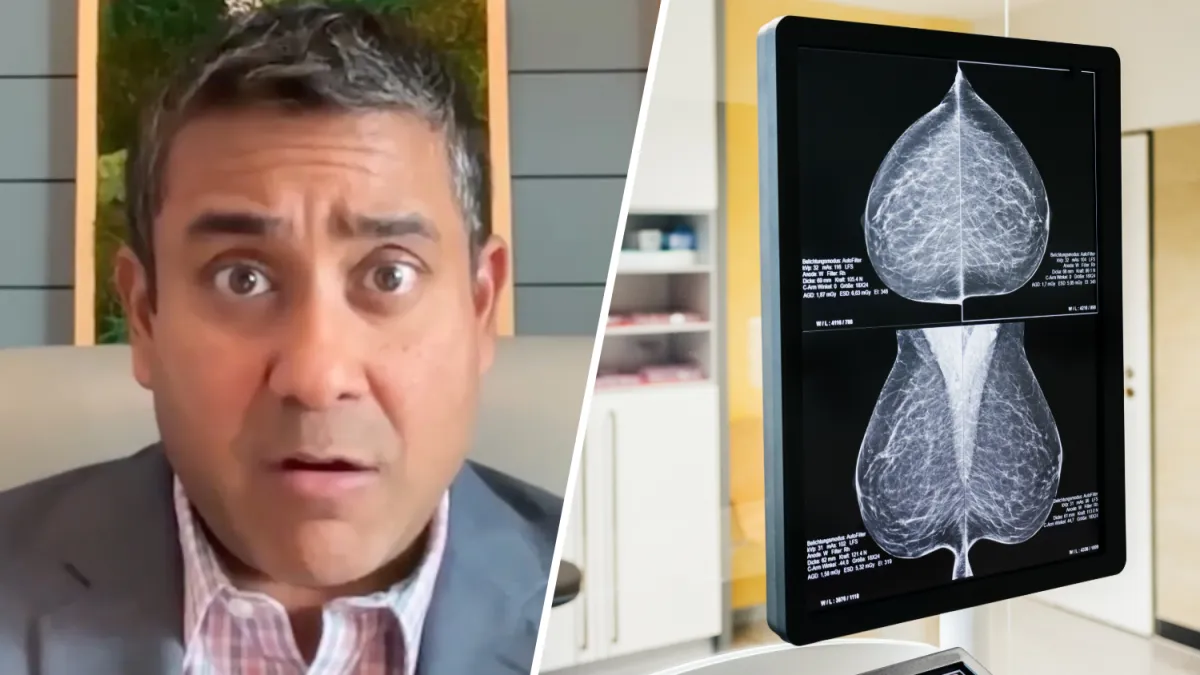
Dr. Arif Kamal, chief patient officer for the American Cancer Society, says there have been great strides in breast cancer awareness over the last 40 years, with mortality rates dropping by 40% as a result of earlier detection.
But there are still plenty of things people don’t know when it comes to monitoring their own risk.
Here’s what to know:
Know your own risk
In the United States, 1 in 8 women, about 12%, will develop breast cancer in their lifetime. But this number can rise to 20% based on an individual’s health and family history.
Risk factors:
Family history: Of people diagnosed with breast cancer, 1 in 10 have a family history. This can be a history of breast cancer, but can also be ovarian, endometrial, pancreas or colon cancer.
Menstrual history: Women who start their menstrual cycles at a younger age, around 11 or 12, are at a higher risk than those who start later, around 13, 14, or 15.
Pregnancy history: Women who have been pregnant, delivered a baby, and have breastfed are at a lower risk.
Weight and lifestyle: Obesity and high alcohol consumption increase risk.
Breast tissue: Having dense breast tissue makes breast cancer 1.5 to 2 times more likely.
What is dense breast tissue?
Having dense breast tissue is one of the biggest risk factors for breast cancer, and it’s something most women have never heard of.
Having dense breast tissue makes detection more difficult by creating a hazy picture during mammograms. This makes it more difficult to spot abnormalities like dark spots.
Kamal says that if your mammogram report mentions dense breast tissue it’s essential to talk to your doctor and decide what you are going to do next. This could be scheduling an ultrasound or an MRI to get a clearer picture, or scheduling mammograms more frequently.
It is uncertain whether the dense tissue makes breast cancer more common or if it is more common due to more difficulty in reading mammograms. Either way, Kamal says the only wrong approach someone can take to discovering they have dense breast tissue is not taking any form of action.
How is breast cancer diagnosed?
Kamal defines cancer as the “abnormal growth of normal cells.” In the case of breast cancer, this begins in the breast but can spread to other areas such as the lungs, bone, or liver. However, it would still be classified as breast cancer because of it’s origin.
It is recommended that women begin getting mammograms at the age of 40. A mammogram is a 3D image of a womans’ breast that monitors for abnormal changes like dark spots. If something abnormal is found, typically there is a follow up with an ultrasound .
Women often describe an abnormal feeling of a small rock or gravel in their breast. Frequently these changes are not actually cancer but are benign cysts or small abnormal growths. However, it is still important to have it checked out in case it is cancerous or precancerous.
Catching abnormalities at an early stage is essential in the reduction in mortality rate.
What are the cancer stages?
The severity of cancer is described in stages, which help define the extent of the disease and the right treatment process.
Stage 1: Breast cancer is still in the breast.
Stage 2: The cancer has grown and might be beginning to move.
Stage 3: The cancer has moved out of the breast and into local areas, usually the lymph nodes in the armpit.
Stage 4: The cancer has moved into other organs like the liver, brain, or lungs.
The importance of taking action
In the 40 years of breast cancer awareness, the mortality rate has gone down 40% due to the increase in mammograms leading to finding cancer at earlier stages.
At stage 1 or 2 breast cancer, the cure rate is 85-90% or higher. Once that cancer advances to stage 3 of 4, the cure rate can drop to 50% or lower.
How to lower your risk: